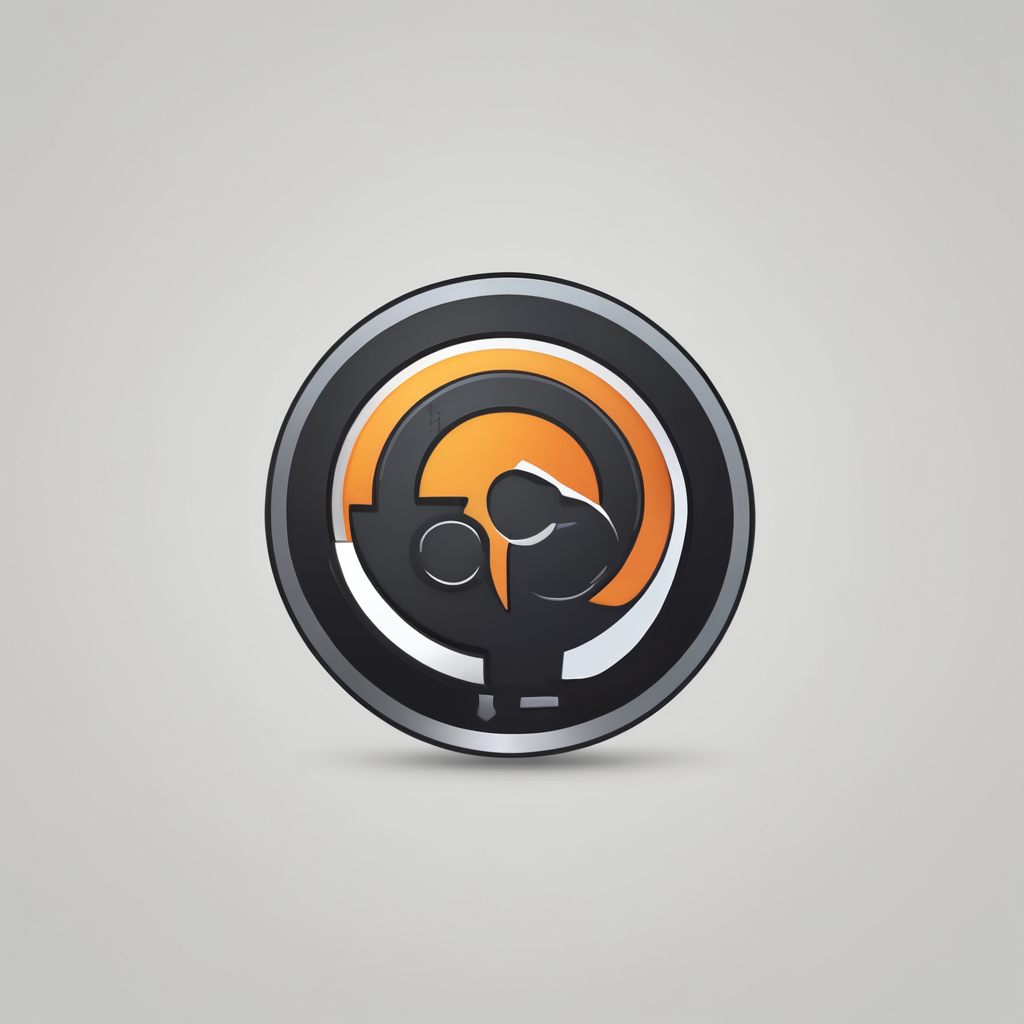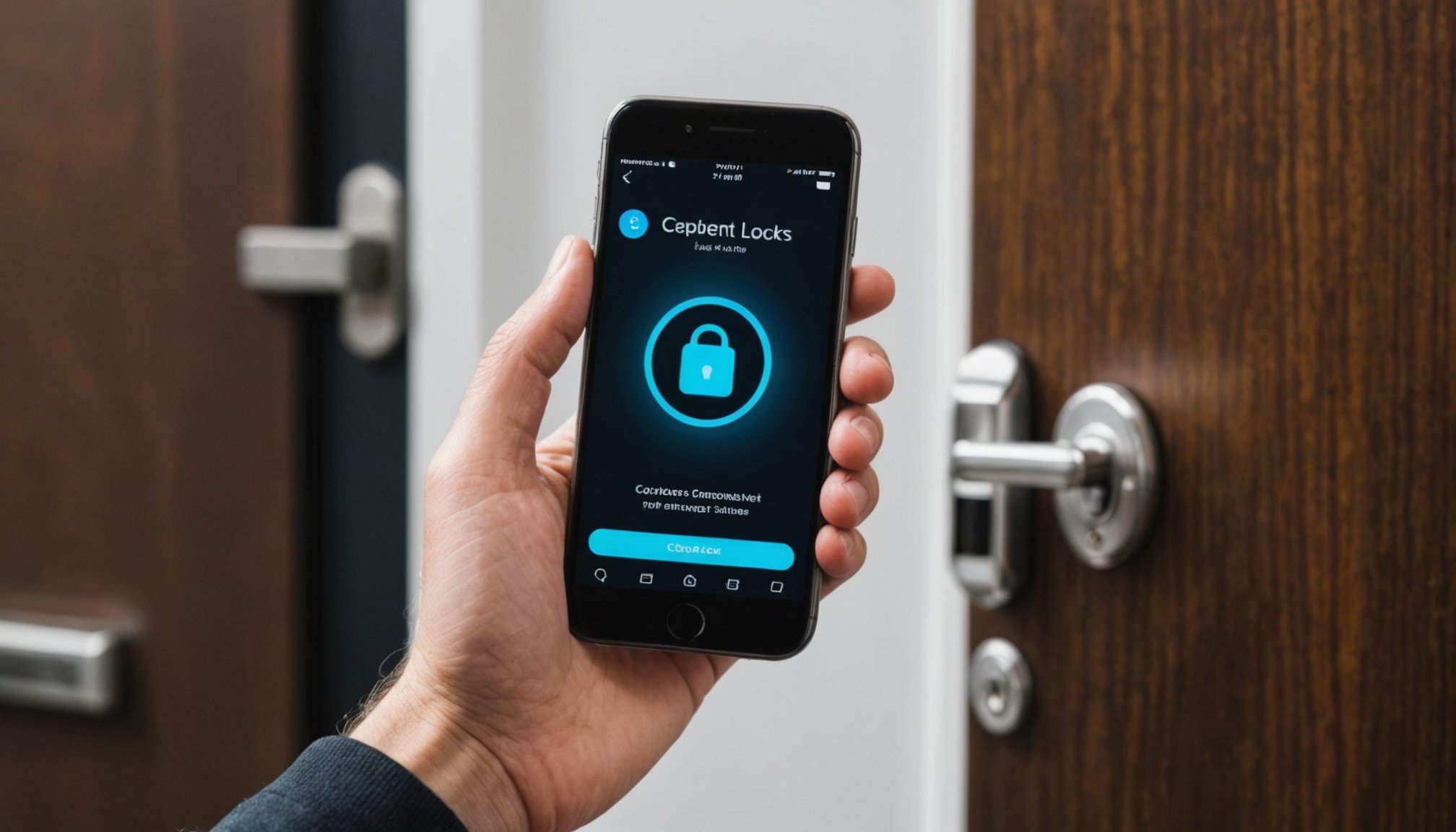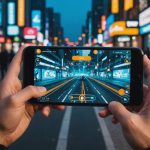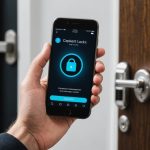Enhancing Security with Smart Locks
Smart locks have revolutionised home security by merging traditional locking mechanisms with advanced smartphone technology. This integration offers users unparalleled convenience and control. Through dedicated smartphone apps, users can effortlessly manage their smart locks, receiving real-time mobile notifications and access control features to ensure their property’s safety.
One significant advantage of using smartphone apps for managing smart locks is the ability to lock or unlock doors remotely. This feature ensures that even if you’re miles away, you have access to your home security system. Another benefit is the use of unique access codes that can be issued to family members, friends, or service providers, enabling significant management flexibility and oversight.
Also to discover : Maximize Your Fitness Journey: Best Smartphone Hacks for Optimal Tracking
When selecting a smart lock, it is vital to evaluate security features, such as encryption and autolock capabilities. These features ensure your smart lock is robust against potential hack attempts while the autolock function automatically secures your door after a specified time. Always choose smart lock systems with strong user authentication and regular updates to keep up with the latest security patches.
By incorporating these technologies, smart locks not only enhance security but also simplify everyday tasks, offering peace of mind and greater control over personal security.
Also read : Unlocking the Secrets of Live Crypto Trading: Your Smartphone’s Ultimate Step-by-Step Manual
Smartphone Functions for Smart Lock Management
Smartphone app features play a crucial role in the efficient management of smart lock systems. With smartphone apps, users can seamlessly control access, receive notifications, and maintain an updated insight into their home security status.
Recommended Apps for Smart Lock Control
When choosing the right smartphone app for smart lock management, certain features are paramount. Look for apps that offer robust access control options, including the ability to generate unique access codes. The right app should also provide real-time mobile notifications about door activity, giving users proactive oversight of their home’s security.
Setting Up and Customizing Your Smart Lock
Installing and personalizing your smart lock starts with ensuring compatibility between the smart lock and your smartphone. Follow initial setup steps within the app to seamlessly integrate the lock with your phone. Customization options in the app allow for setting specific entry permissions, adjusting autolock intervals, and personalizing notification alerts.
Troubleshooting Common Issues
Occasionally, users may face connectivity and technical issues. To tackle these challenges, ensure your smartphone is sufficiently updated and that the app has the requisite permissions enabled. If problems persist, consult app support sections or relevant online forums for troubleshooting guidance. Consistent updates from smart lock manufacturers can also prevent potential technical hiccups.
Designing Dynamic Travel Itineraries
Crafting a dynamic travel itinerary involves blending thoughtful planning with the use of technology. Central to this process is the integration of mobile travel apps. These tools facilitate seamless itinerary design, offering features focused on improving the travel experience and streamlining activity scheduling.
A well-organised itinerary includes key elements to enrich a trip. Essential components such as destinations, travel dates, and accommodation details form the backbone. Utilising mobile travel apps provides added benefits, such as real-time updates and the ability to store essential documents. These apps often include a visual planner, aiding in the spatial organisation of trips, helping users make informed decisions with clear overviews.
Visual formats play a significant role in itinerary design. By integrating maps and pictorial calendars, travellers can enjoy an enhanced visual representation of their journeys, making plans more intuitive and easier to manage. It’s also useful to explore different itinerary templates available in apps, as these cater to varying travel styles, from relaxing vacations to adventure-packed trips. Employing these strategies ensures a well-rounded, vibrant travel plan, empowering travellers to focus more on their upcoming experiences rather than logistics.
Real-Life Use Cases and Examples
Incorporating smart locks into everyday life offers practical advantages that users have widely embraced. Consider a scenario where a family integrates a smart lock system with mobile access control for their home. This setup allows each family member to receive a unique access code via a smartphone app, providing secure, individualised entry control. The convenience of smartphone security ensures keys are obsolete, and parents can manage who enters their home remotely, offering greater flexibility and peace of mind.
On the other side of technology integration is smartphone itinerary management for world travellers. One relevant example involves a group of friends planning an around-the-world trip. Utilizing mobile travel apps for itinerary design, they seamlessly coordinate their schedules, accommodations, and activities across multiple countries. Such digital planning tools provide a unified platform for all travellers to stay updated on travel amendments without constant back-and-forth communication. The inclusion of visual formats, such as maps and pictorial calendars, enriches their planning experience and enhances the joy of anticipation.
These smart technologies, whether smart locks or travel planning apps, underscore the power of integrating mobile access control into routines, offering both enhanced security and an enriched experience.
Best Practices for Sharing Itineraries
Sharing travel itineraries effectively requires using the right travel itinerary sharing platforms. These platforms enhance collaborative planning, allowing travellers to jointly manage schedules, accommodations, and activities. Social apps such as Google Docs or Trello permit real-time updates, ensuring everyone is on the same page. Choosing a platform hinges on user preference and the desired level of interaction among trip participants.
Choosing the Right Platform for Sharing
When selecting a platform, consider ease of use and engagement capabilities. Apps like TripIt and TripCase excel in itinerary management by integrating travel details into a single accessible space. They streamline collaboration, reducing the need for scattered communications. Opt for platforms that offer both desktop and mobile versions, ensuring seamless access on the go.
Tips for Collaborative Travel Planning
Involving multiple people in planning boosts creativity and introduces diverse ideas. Successful planning includes setting clear goals and assigning tasks, which fosters active participation. Utilising shared task management tools ensures cohesive planning efforts. Regular check-ins through these platforms help track progress and keep everyone aligned.
Enhancing Itinerary Visibility with Visuals
Visuals, such as maps and photo calendars, make itineraries more intuitive and enjoyable. Infographics and image-rich timelines elevate the planning experience by providing easy-to-digest information. Incorporating visuals creates a visually stimulating itinerary attractive to all users, ultimately enhancing overall trip anticipation and experience.










